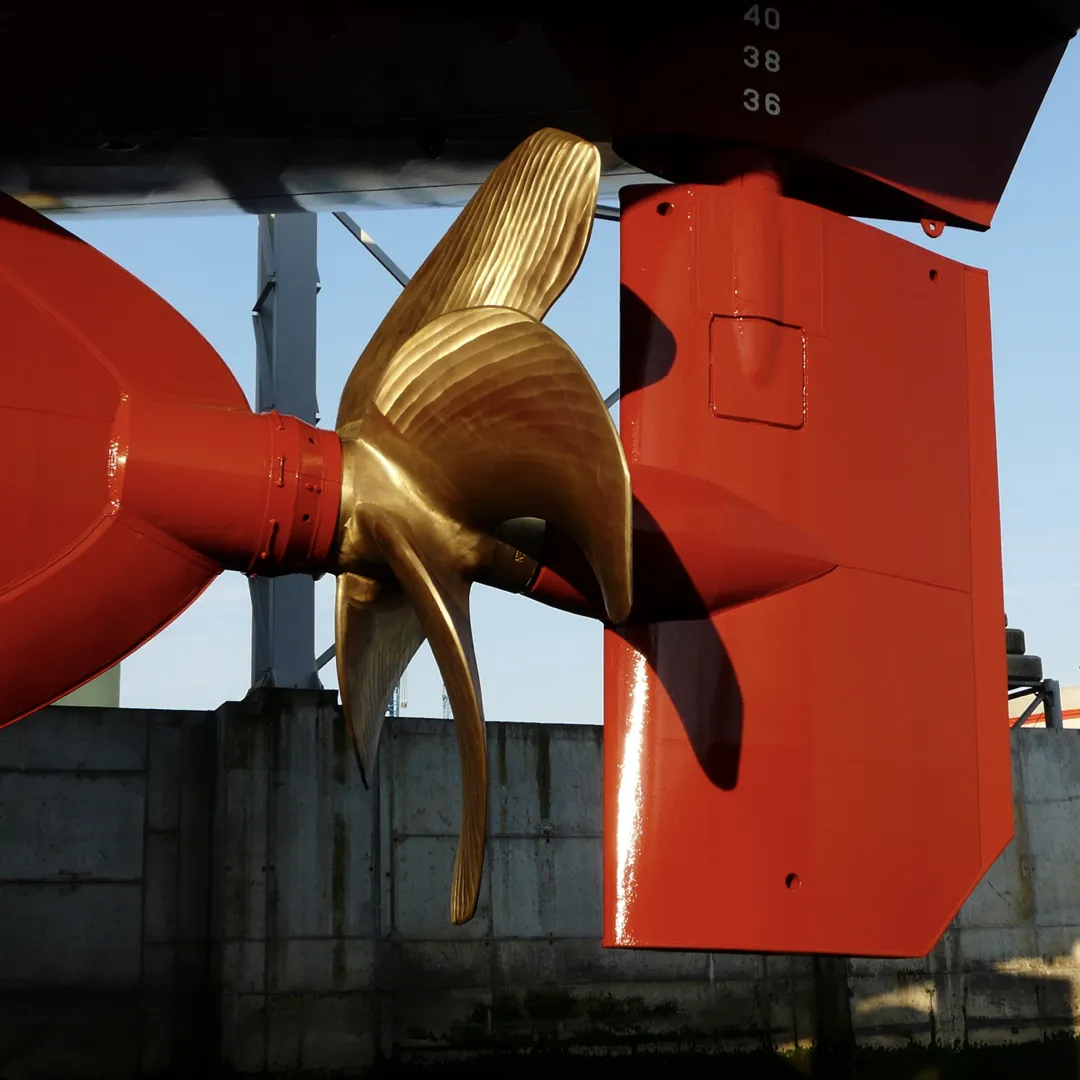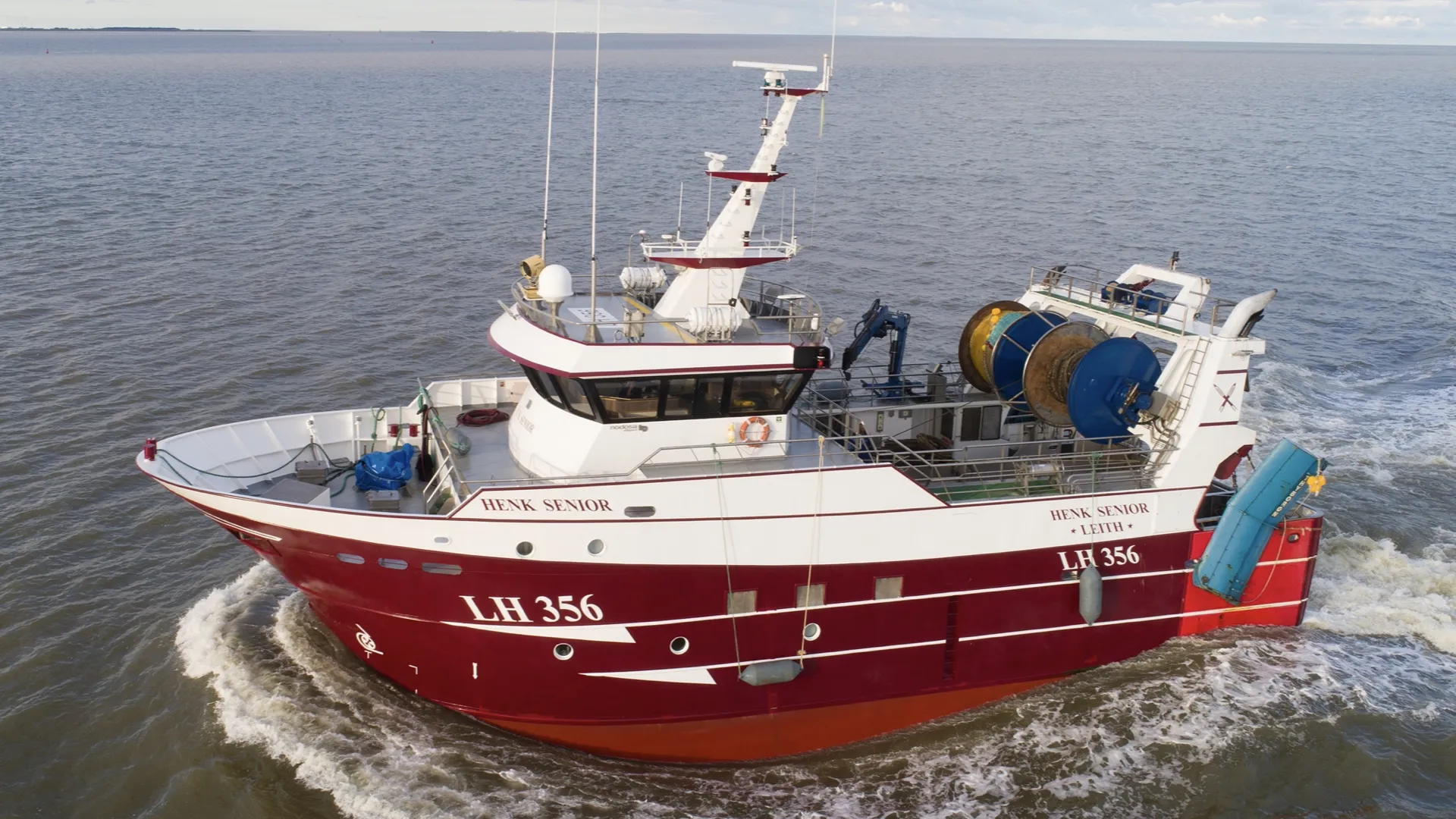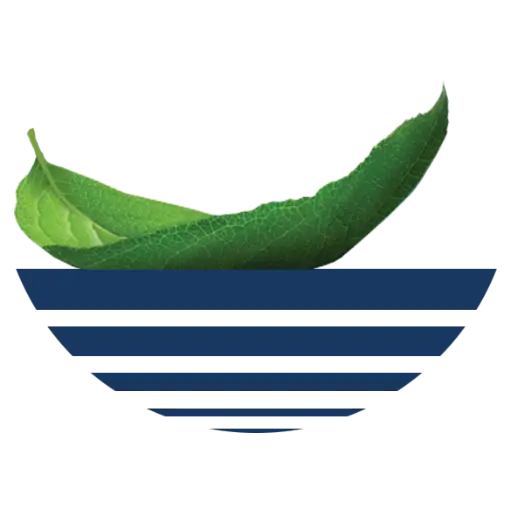
CFD-Optimized Ship Rudder
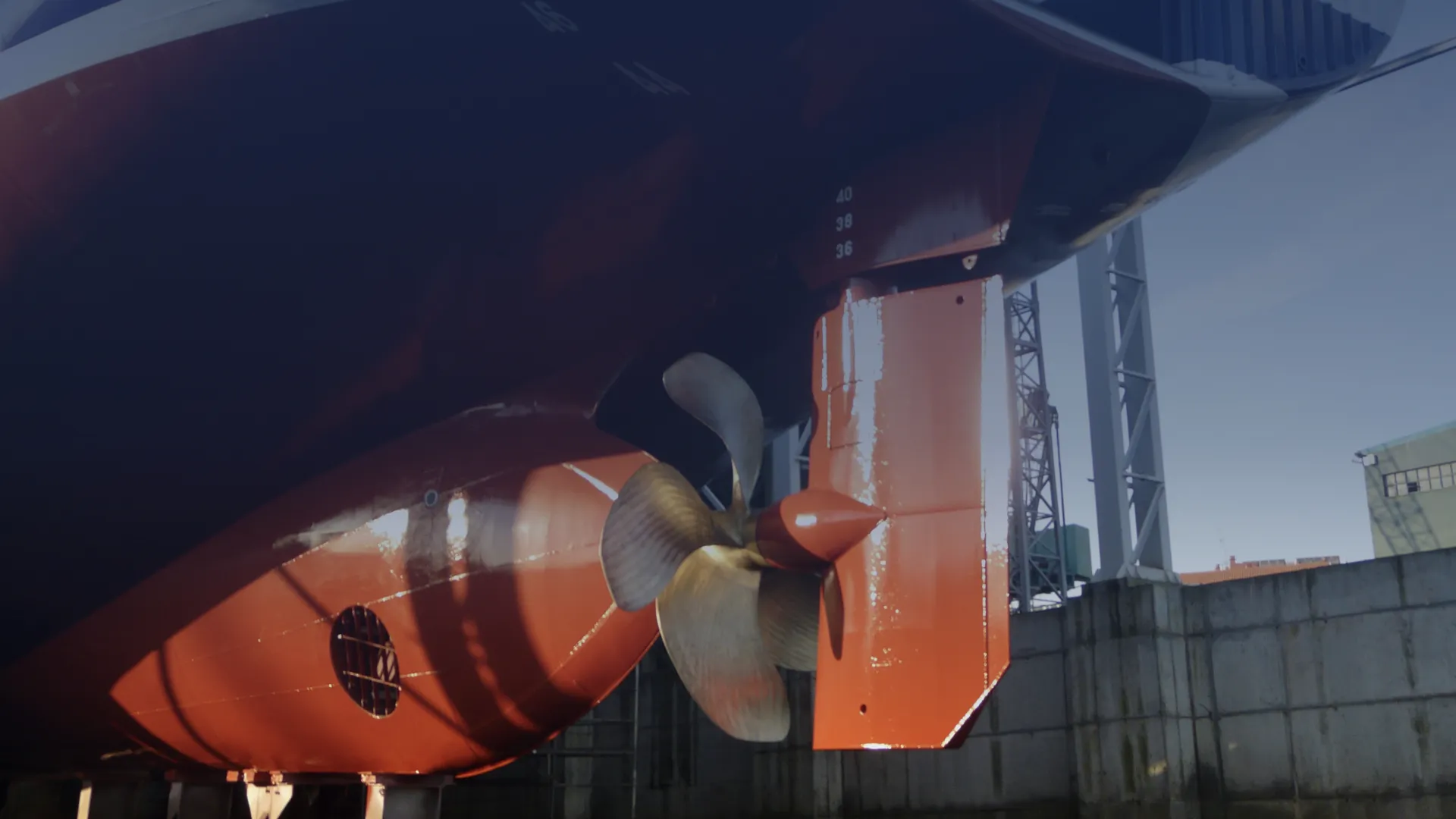
Would you like a rudder that is perfectly tailored to your vessel, with the appropriate type, profile, suspension, and placement of the rudder stock, matching your propeller, nozzle, hull shape, and sailing profile? Whether it concerns an inland vessel, dredger, trailing suction hopper dredger, crane vessel, offshore support vessel, ferry, passenger ship, or superyacht, our partner is pleased to investigate the hydrodynamic performance of your existing or newly designed vessel to achieve an optimal rudder for your operating conditions. Every rudder design aims for maximum fuel efficiency, maneuverability, and stability.
CFD-Optimized Ship Rudder
Our partner is pleased to investigate the hydrodynamic performance of your existing or newly designed vessel to achieve an optimal rudder for your operating conditions.
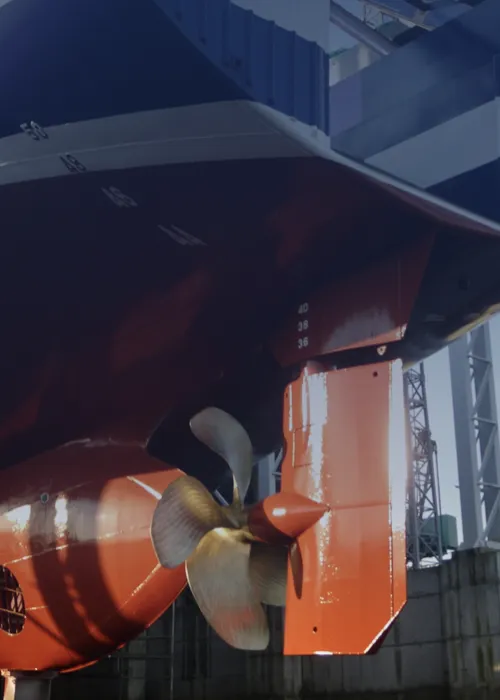
Design Process
Selecting the right type and profile of the rudder is essential for enhancing the maneuverability and stability of your vessel. The optimal design is determined by various factors, including the shape of the vessel, the characteristics of the propeller and, if applicable, the nozzle, as well as the desired sailing profile of the ship.
Properties
Regardless of the type and profile of the rudder you choose, each rudder is manufactured from high-quality materials, undergoes extensive testing, and can be certified by nearly any classification bureau. This ensures that the rudders meet all international standards and regulations regarding safety, performance, and reliability.
What sets the approach apart is the emphasis on validated Computational Fluid Dynamics (CFD) studies. With the help of these scientific investigations, the most optimal type and profile of the rudder can be selected and potentially improved. This creates added value that exceeds the capabilities of standard rudders.
Existing Vessel
Are you curious about the benefits of a CFD-optimized ship rudder for your current vessel? If you still have the necessary drawings of your vessel, the designers can quite easily develop a suitable type of rudder and profile and calculate the expected performance for you.
If you no longer have the drawings of your vessel but still want to explore which type and profile of rudder are most suitable for your sailing conditions, you can still opt for a CFD-optimized rudder. With the assistance of a 3D scan and precise measurements, the designers can accurately outline your fore and aft ship, encompassing existing appendages such as propellers and nozzles. Based on this, the optimal rudder, including the suspension and placement of the rudder stock, can be investigated and designed, fully tailored to your sailing profile.
In Practice
CFD-optimized ship rudders have proven their value across various vessels and sectors within the maritime industry.
An example from the fishing sector involves one of the oldest Dutch fishing families from Urk, who chose to equip their new twinrigger/flyshooter (see the photo below) with a CFD-optimized rudder design.
This decision has led to an increase in the cavitation-free rudder angle and a reduction in resistance, resulting in less environmental impact and cost savings.
Design Process
Selecting the right type and profile of the rudder is essential for enhancing the maneuverability and stability of your vessel. The optimal design is determined by various factors, including the shape of the vessel, the characteristics of the propeller and, if applicable, the nozzle, as well as the desired sailing profile of the ship.
Properties
Regardless of the type and profile of the rudder you choose, each rudder is manufactured from high-quality materials, undergoes extensive testing, and can be certified by nearly any classification bureau. This ensures that the rudders meet all international standards and regulations regarding safety, performance, and reliability.
What sets the approach apart is the emphasis on validated Computational Fluid Dynamics (CFD) studies. With the help of these scientific investigations, the most optimal type and profile of the rudder can be selected and potentially improved. This creates added value that exceeds the capabilities of standard rudders.
Properties
Regardless of the type and profile of the rudder you choose, each rudder is manufactured from high-quality materials, undergoes extensive testing, and can be certified by nearly any classification bureau. This ensures that the rudders meet all international standards and regulations regarding safety, performance, and reliability.
Existing Vessel
Are you curious about the benefits of a CFD-optimized rudder for your current vessel? If you still have the necessary drawings of your vessel, the designers can quite easily develop a suitable type of rudder and profile and calculate the expected performance for you.
If you no longer have the drawings of your vessel but still want to explore which type and profile of rudder are most suitable for your sailing conditions, you can still opt for a CFD-optimized rudder. With the assistance of a 3D scan and precise measurements, the designers can accurately outline your fore and aft ship, encompassing existing appendages such as propellers and nozzles. Based on this, the optimal rudder, including the suspension and placement of the rudder stock, can be investigated and designed, fully tailored to your sailing profile.
In Practice
CFD-optimized ship rudders have proven their value across various vessels and sectors within the maritime industry. An example from the fishing sector involves one of the oldest Dutch fishing families from Urk, who chose to equip their new twinrigger/flyshooter (see the photo below) with a CFD-optimized rudder design. This decision has led to an increase in the cavitation-free rudder angle and a reduction in resistance, resulting in less environmental impact and cost savings.

